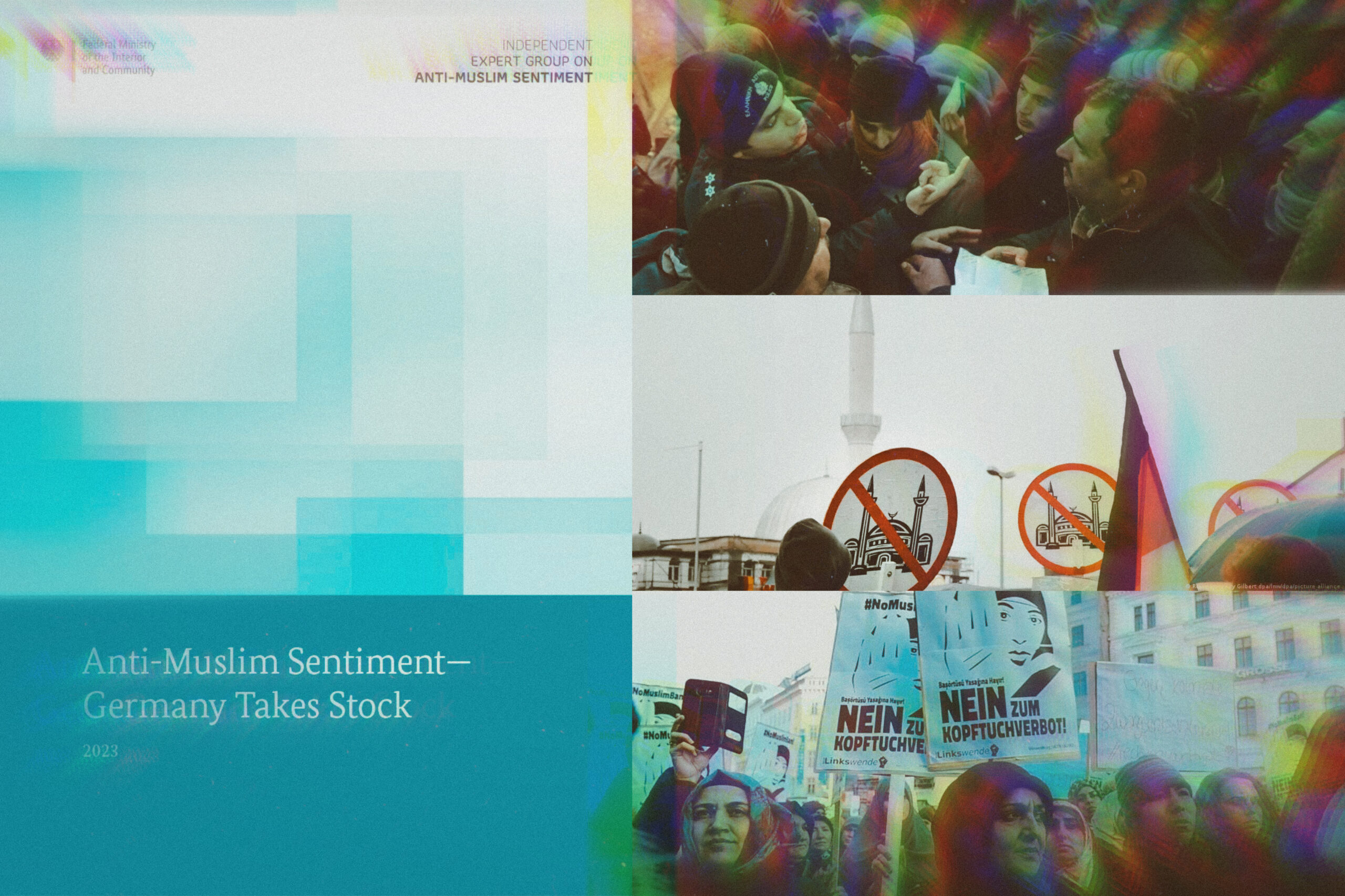Introduction
This report—the second of two produced by the British Council Bridging Voices project on ‘The Muslim Atlantic’— represents an analytic synthesis and presentation of insights arising from two workshops organized by the project in 2019 and 2020. The rest of these convenings focused on the question of how debates and discussions about gender compare across Muslim communities in the United Kingdom and the United States. The second workshop explored Muslim experiences of race and securitization in transatlantic perspective.
Gender and the Muslim Atlantic
A common theme that emerged across the discussions was the experience of Islamophobia and the negotiation of Muslim identities in the public sphere, in the context of heightened scrutiny. Muslim women in particular must engage in multiple levels of role performance, as they constantly need to take in the world through a ‘double consciousness’ of not only their lives but also how their lives are viewed through the eyes of others.
A participant noted that the pressure Muslims feel to be representative of all Muslims in their public lives forces unreasonable and ultimately oppressive expectations. There was an understanding that sustaining this emotional work on a day to day basis is, as one contributor put it, ‘exhausting’. It has tangible and negative consequences on an individual level and in ways that impact wider Muslim communities.
#MeToo
Discussion of the #MeToo Movement highlighted the erasure of black female voices from the movement. The movement was started in 2006 by Tarana Burke, a black woman and survivor of sexual violence who started the hashtag as an attempt to support other victims of abuse. ?e
hashtag was taken up more than a decade later in 2017 by the actress Alyssa Milano and went viral, with mainly white women taking up the cause. Despite the seemingly large impact the hashtag has had on societal awareness of sexual harassment and abuse, it was agreed amongst participants that the lack of credit to Burke for starting the movement is part of a longer narrative of silencing and whitewashing. This pattern of exclusion of black female experience was something that resounded as an unsurprising reality for many participants of the workshop who raised questions about how black lives can be centered going forward.
Another significant theme in this debate centered around the tensions felt within Muslim communities when abuse was perpetrated by high-profile spiritual leaders. This topic sparked some of the most heated discussions in the workshop. Focusing on cases of abuse by high profile Muslim figures, participants grappled with the need for awareness and open dialogue about
abuse in the community, in line with the progress made by the #MeToo and #MosqueMeToo movements, and the recognition that as a ‘suspect community’ there were overriding pressures not to ‘wash your dirty linen in public’.
The overwhelming feeling amongst participants was that this was a perpetuation of misogynistic norms of victim blaming, specifically targeting women. These norms further damage efforts to safeguard vulnerable groups, instead reinforcing a cycle of silence amongst
victims.
How Muslims discuss and interpret issues of gender
In the United States, the division—and fraught history—between black Muslims and immigrant Muslims is a defining feature of Islam. In general the experience of black Muslim women encompasses the dual dislocation of racial marginalization and membership in a minority religion viewed with suspicion (including sometimes by immigrant co-religionists). This distinctive position is rendered even sharper in the US where, in the present political context, the figure of a politically-engaged black Muslimah
embodies everything that ascendant Christian, anti-feminist, white nationalism stands against.
In Britain, the majority South Asian demography of British Islam and ongoing ties to the subcontinent have led to establish the position postcolonial status as a defining feature of f British Muslimness. British society hasntended to bury issues of race under those of class, which has obfuscated Britain’s central role in the transatlantic slave trade.
When discussing prominent Muslim female personalities, there was recognition that figures such as British television chef Nadiya Hussain and American goldmedal winning Olympian Ibtihaj Muhammad have attained a status as national heroes yet have been depoliticized and “deracialized”
in the process. In effect, these figures were seen by workshop
participants as sanitized Muslim women of color. Their status as
‘winners’ and a foregrounding of their patriotic attributes made them unthreatening symbols of national virtue. As one participant put it: ‘we’re all encouraged to “be more like Nadiya”’. This fed into a conversation around the pressure to conform to national ideals when Muslim women in the UK were encouraged to wear hijabs decorated with poppies, a symbol commemorating patriotic sacrifices in World War I. Some participants felt that this was an example of the pressure for Muslim women to conform to a kind of colonial subservience. Across various sessions, participants put forward the need for more courageous and ‘radical’ role models of Muslim Atlantic life.
Conclusions from the workshop
- Muslim women face pressures to conform to domestic role models such as Nadiya Hussain, or to domesticated activities such as wearing a poppy. This can signify colonial subservience
- Muslim women feel the performance of community expectations and performing expectations from the wider community leads to pressure which is deemed ‘exhausting’.
- The #MeToo movement was muted among Muslim communities in the US and UK, with women being told ‘dont wash your dirty linen in public’.
- The lack of female authority within Muslim communities creates power imbalances exploited by some male Muslim leaders.
- Muslim women need safe spaces where trust can be built and discussion of issues such as sexual harassment and domestic abuse can be meaningfully addressed.






